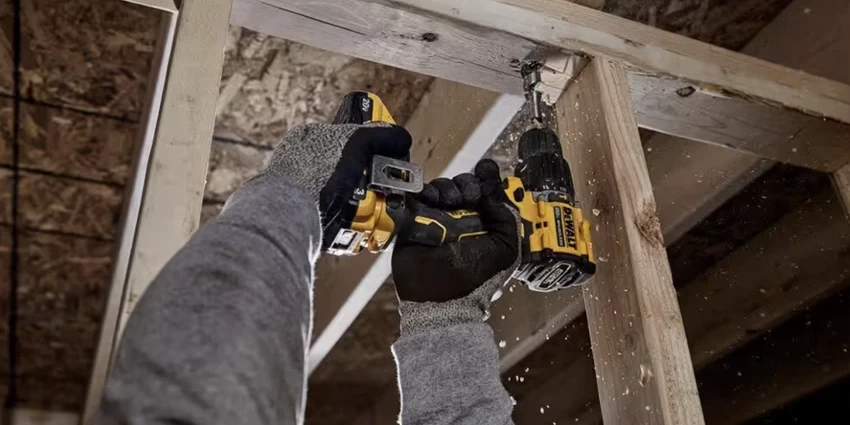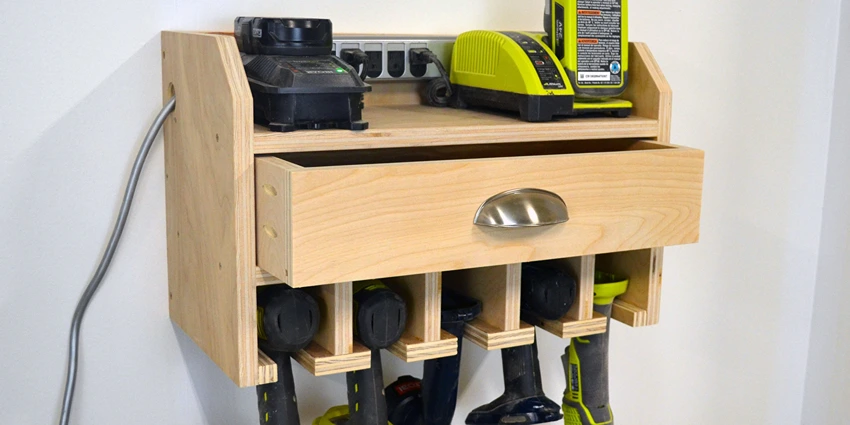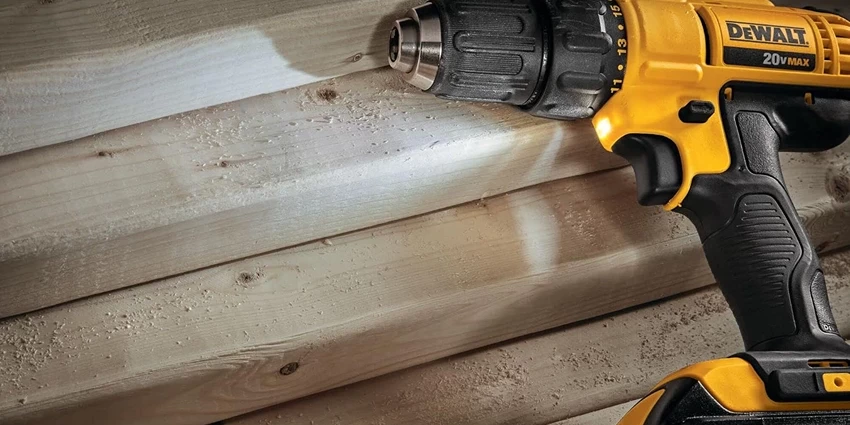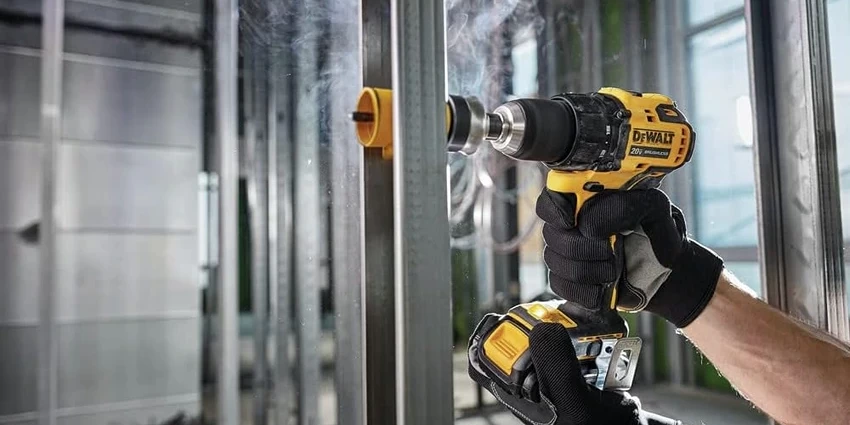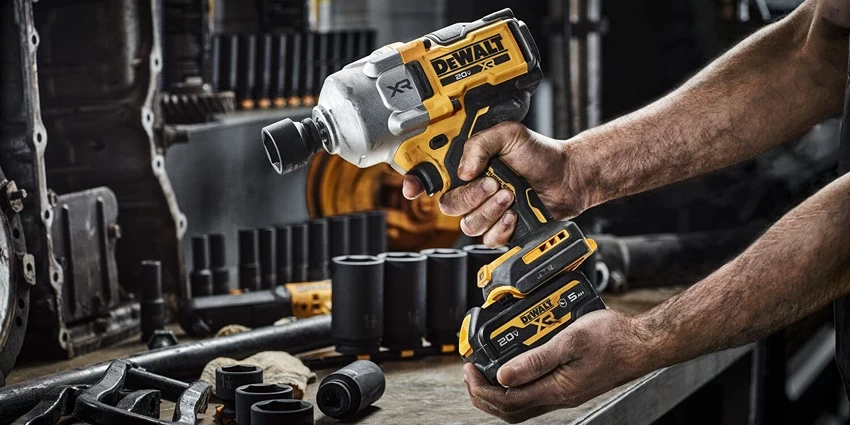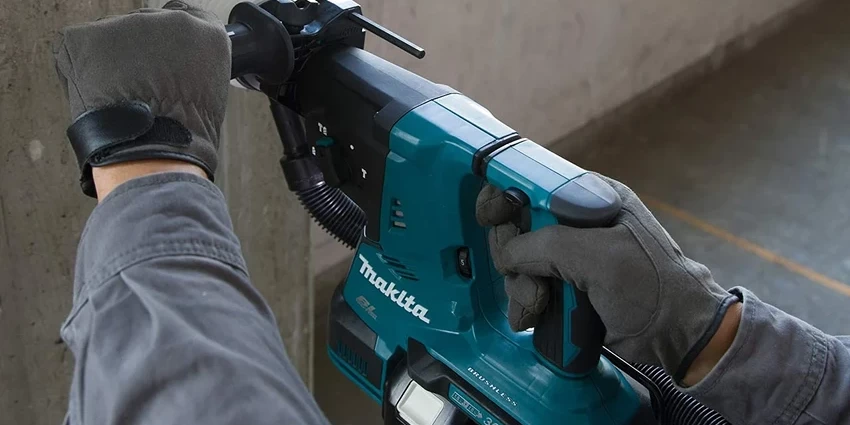All products were chosen independently by our editorial team. This review contains affiliate links and we may receive a commission for purchases made. Please read our affiliates FAQ page to find out more.
Home » Cordless Drills » Impact Driver vs Drill: What’s the Difference?
In the realm of DIY projects and construction, choosing the right tool for the job is paramount. Whether you’re assembling furniture, building a deck, or hanging shelves, the efficiency and outcome of your project can significantly depend on whether you reach for a drill or an impact driver. Both tools may look similar and even share some functions, but they’re designed for different tasks. Understanding the nuances between them can transform your approach to DIY projects, making your work more efficient and enjoyable.
Key Takeaways
- Drills are versatile tools ideal for drilling holes and driving screws in light-duty tasks.
- Impact drivers provide higher torque, making them perfect for driving screws and bolts with less effort.
- Physical differences include size, shape, and the type of chuck.
- Impact drivers are generally louder and more powerful, suited for heavy-duty tasks.
- Choosing between the two depends on the project’s needs, material, and personal preference.
Introduction to Power Tools: Drills and Impact Drivers
Power tools have revolutionized the way we approach DIY projects and professional construction tasks. Among these, drills and impact drivers stand out for their utility and versatility. While both can drive screws into various materials, their design and operation cater to different needs and applications. This section will explore these essential tools, setting the stage for a deeper comparison.

Understanding Drills
At its core, a drill is a tool designed to create holes in materials or drive screws. It’s a staple in both professional and home toolkits due to its versatility. Drills come in various forms, including corded and cordless models, each with its set of features tailored to different tasks.
Types of Drills and Their Applications
- Cordless Drills: Offer portability and convenience, ideal for home use and light-duty tasks.
- Corded Drills: Provide continuous power, suited for heavy-duty drilling tasks requiring prolonged use.
- Hammer Drills: Designed for drilling into masonry and concrete, combining rotation with a hammering action.
Key features of drills include adjustable speed settings, which allow for precision control over the drilling process, and torque settings, enabling the user to adjust the force applied for different materials and screw sizes.
Understanding Impact Drivers
Impact drivers are designed to handle driving tasks more efficiently than traditional drills. They deliver high torque output with minimal effort from the user, making them ideal for driving long screws or bolts into hard materials. Unlike drills, impact drivers use a combination of rotation and concussive blows to drive screws, which reduces the strain on the user’s wrist and minimizes the risk of stripping the screw head.
Impact drivers are typically smaller and lighter than drills, with a hex collet that accepts hex-shanked driver bits. This design makes them less versatile than drills in terms of the variety of bits they can use but more efficient for their intended purpose of fastening.
Drill vs. Impact Driver: A Comparative Analysis
When comparing drills and impact drivers, several key differences become apparent. These differences not only affect how each tool is used but also their effectiveness in various tasks.
Physical Differences
| Feature | Drill | Impact Driver |
| Chuck Type | Keyless chuck | Hex collet |
| Size & Shape | Larger, cylindrical | Compact, shorter |
| Weight | Varies | Generally lighter |
Performance Comparison
- Torque: Impact drivers offer significantly more torque than drills, making them ideal for driving large screws or bolts.
- Speed: Drills provide a wider range of speed settings, allowing for more precise control in drilling tasks.
- Control: The impact mechanism in impact drivers reduces the likelihood of wrist strain and screw stripping, offering better control in fastening tasks.
Application Scenarios
- Drills: Best for precision drilling tasks, especially when using different types of drill bits for various materials.
- Impact Drivers: Excel in fastening tasks, particularly when working with long screws or hard materials.
Choosing between a drill and an impact driver often comes down to the specific needs of your project. For most DIY enthusiasts and professionals, having both tools in their arsenal covers a wide range of tasks, ensuring they’re always equipped with the right tool for the job.
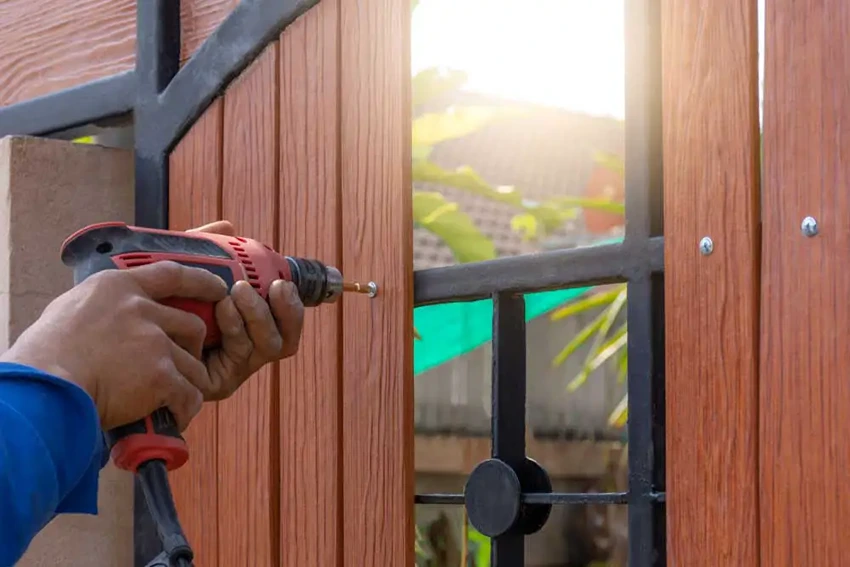
Choosing Between a Drill and an Impact Driver
When deciding whether a drill or an impact driver is the right tool for your project, consider the following factors:
- Project Type: Drills are better suited for creating holes and precision tasks, while impact drivers excel in fastening screws and bolts.
- Material: Soft materials and light-duty tasks may only require a drill, but hard materials like hardwood or metal might necessitate the torque of an impact driver.
- Frequency of Use: If you frequently work on projects requiring fastening, an impact driver could be a valuable addition to your toolkit.
Cost considerations also play a role, with impact drivers generally being more expensive than drills. However, the efficiency and time saved on fastening tasks often justify the investment in an impact driver.
Maintenance and Safety Tips
Proper care and maintenance extend the life of your power tools and ensure they remain safe to use. Regular cleaning, proper storage, and battery care for cordless models are essential. Additionally, always wear appropriate safety gear, such as goggles and gloves, and follow the manufacturer’s instructions to prevent accidents.
Choosing Between a Drill and an Impact Driver
When it comes down to selecting the right tool for your project, consider the task at hand, the material you’re working with, and your budget. While drills offer versatility and precision, impact drivers provide superior torque and efficiency for fastening tasks. For those regularly involved in DIY projects or construction work, investing in both tools can cover a broader range of tasks, ensuring you’re always prepared.

Maintenance and Safety Tips
Proper maintenance and adherence to safety guidelines are crucial for the longevity and safe use of your power tools. Regular cleaning, appropriate storage, and battery maintenance for cordless models will keep your tools in top condition. Always wear safety gear, such as protective eyewear and gloves, and follow the manufacturer’s instructions to prevent accidents.
Additional Insights
Understanding the capabilities and limitations of drills and impact drivers enhances your toolkit’s effectiveness. By choosing the right tool for each task, you can work more efficiently, achieve better results, and enjoy your projects more. Whether you’re a seasoned professional or a DIY enthusiast, the knowledge of when to use a drill or an impact driver can significantly impact the quality and enjoyment of your work.
Tables with Relevant Facts
Table 1: Tool Comparison
| Feature | Drill | Impact Driver |
| Best For | Precision drilling and light driving tasks | Fastening and heavy-duty driving tasks |
| Torque | Lower, adjustable | Higher, with impact mechanism |
| Bit Type | Keyless chuck for versatility | Hex collet for quick bit changes |
| User Effort | More effort for driving | Less effort, reduces wrist strain |
Table 2: Project Suitability
| Project Type | Drill | Impact Driver |
| Furniture Assembly | ✓ | ✓ |
| Deck Building | ✓ | |
| Installing Drywall | ✓ | |
| Crafting and Detail Work | ✓ |
Register for our latest in-depth reviews and product round-ups from the experts.
Enter your email address below to receive our monthly review emails.
By entering your details, you are agreeing to our terms and conditions and privacy policy. You can unsubscribe at any time.
Frequently Asked Questions
Use a drill when precision is key, such as when drilling holes of specific sizes or when working with delicate materials that require careful handling. Drills offer adjustable speed and torque settings, making them versatile for a wide range of drilling and driving tasks.
While impact drivers are primarily designed for driving screws and bolts, they can be used for drilling tasks with the right hex-shank drill bits. However, their high torque and impact mechanism make them less suitable for precision drilling, especially in delicate materials.
- High Torque: Impact drivers deliver more torque, making it easier to drive screws into hard materials.
- Less Strain: The impact mechanism reduces the effort required from the user, minimizing wrist strain.
- Reduced Slippage: The concussive action helps maintain bit engagement, reducing the risk of stripping screw heads.
For most DIY enthusiasts and professionals, having both tools is beneficial. A drill offers versatility for drilling and light driving tasks, while an impact driver excels in fastening, especially with long screws or in hard materials
Eleanor is the quintessential spirit of the British gardener — passionate, dedicated, and endlessly curious about the natural world. Born and raised amidst the verdant landscapes of the Cotswolds, she developed an early love for the outdoors, often spending hours in the family garden with her hands buried in the soil, nurturing every type of plant she could find.



